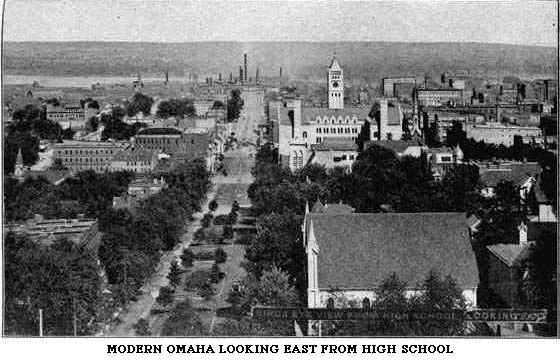Fifty-one years ago, May 30, 1854, the Kansas-Nebraska bill was enacted.
That meant the rapid settlement of the new West; that the "American desert" should blossom as the rose; and that the great moral question of slavery or no slavery should be settled by these new territories for themselves. We are all familiar with the story of "bleeding Kansas," and how she won the victory for freedom.
It was through the immigration of the liberty-loving sons and daughters of the East--the transplanting of a virile New England stock in this western land. That victory determined in large measure the moral status of Nebraska on the slavery question.
The, territory at that time extended from latitude 40o to British America, and from the Missouri river to the ridge of the Rocky mountains, a vast empire of some 350,000 square miles. A portion of this territory has been given to Dakota, Montana, Wyoming, and Colorado, leaving a stretch of territory some 200 miles from north to south and 450 miles. from the Missouri river west. Its altitude ranges from 1,000 feet on the east to 5,000 feet on the west. Its soil is unsurpassed. The eastern portion is a splendid farming country; the western is especially valuable for stock raising. Such a territory was bound to attract settlers from the East, even as Iowa bid attracted them a few years before. They came in ever-increasing numbers. They and
9


| 12 |
CONGREGATIONAL NEBRASKA
|
|
their descendants are among us to-day. Who were they? And what is their influence?
It is the purpose of this sketch to answer in part the questions, to tell the story, though imperfectly it must needs be, of the Congregationalists who came hither, and what they have accomplished. Our treatise, then, is Congregational Nebraska.
|
|
|
|
|
|
© 2002 for the NEGenWeb Project by Pam Rietsch, Ted & Carole Miller
|


